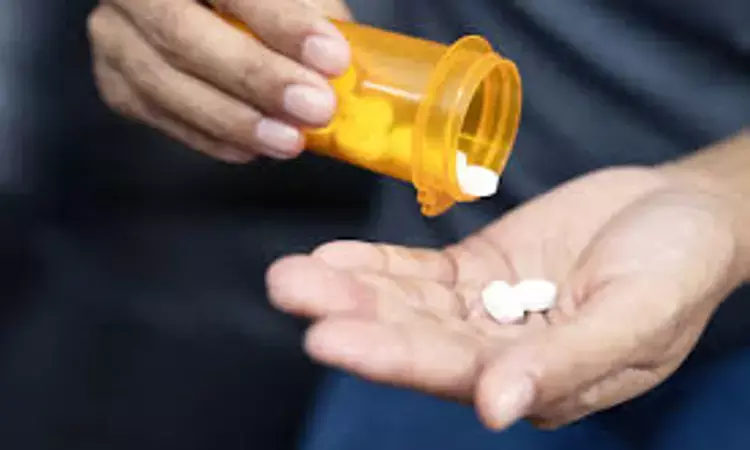- Home
- Medical news & Guidelines
- Anesthesiology
- Cardiology and CTVS
- Critical Care
- Dentistry
- Dermatology
- Diabetes and Endocrinology
- ENT
- Gastroenterology
- Medicine
- Nephrology
- Neurology
- Obstretics-Gynaecology
- Oncology
- Ophthalmology
- Orthopaedics
- Pediatrics-Neonatology
- Psychiatry
- Pulmonology
- Radiology
- Surgery
- Urology
- Laboratory Medicine
- Diet
- Nursing
- Paramedical
- Physiotherapy
- Health news
- Fact Check
- Bone Health Fact Check
- Brain Health Fact Check
- Cancer Related Fact Check
- Child Care Fact Check
- Dental and oral health fact check
- Diabetes and metabolic health fact check
- Diet and Nutrition Fact Check
- Eye and ENT Care Fact Check
- Fitness fact check
- Gut health fact check
- Heart health fact check
- Kidney health fact check
- Medical education fact check
- Men's health fact check
- Respiratory fact check
- Skin and hair care fact check
- Vaccine and Immunization fact check
- Women's health fact check
- AYUSH
- State News
- Andaman and Nicobar Islands
- Andhra Pradesh
- Arunachal Pradesh
- Assam
- Bihar
- Chandigarh
- Chattisgarh
- Dadra and Nagar Haveli
- Daman and Diu
- Delhi
- Goa
- Gujarat
- Haryana
- Himachal Pradesh
- Jammu & Kashmir
- Jharkhand
- Karnataka
- Kerala
- Ladakh
- Lakshadweep
- Madhya Pradesh
- Maharashtra
- Manipur
- Meghalaya
- Mizoram
- Nagaland
- Odisha
- Puducherry
- Punjab
- Rajasthan
- Sikkim
- Tamil Nadu
- Telangana
- Tripura
- Uttar Pradesh
- Uttrakhand
- West Bengal
- Medical Education
- Industry
Periarticular Injection of Bupivacaine reduces post op Narcotic Usage in TKA: study

Boston, MA: Multimodal postoperative pain management protocols have garnered significant interest in the pursuit of a successful total knee arthroplasty (TKA) and patient satisfaction. Periarticular injections (PAIs) and adductor canal blocks (ACBs) are widely accepted pain management strategies for total knee arthroplasty (TKA); however, the optimal anesthetic concentration to provide adequate pain relief while avoiding toxicity remains controversial.
Andrew D. Hagar et al conducted a study to evaluate the efficacy of different anesthetic concentrations for PAI alone and in combination with ACB.
This retrospective cohort study of patients undergoing primary TKAs between January 2019 and November 2020 included 3 groups:
• 0.25% PAI (50 cc of 0.25% bupivacaine PAI diluted with 50 cc of saline and ketorolac),
• 0.5% PAI (50 cc of 0.5% bupivacaine with 50 cc of saline and ketorolac), and
• PAI + ACB (ultrasound-guided preoperative anesthesiologist-administered ACB and 0.25% PAI).
Results:
• In total, 368 TKAs were analyzed (123 0.25%, 132 0.5%, and 113 PAI + ACB).
• Total overall hospital narcotic usage in oral morphine equivalents (OME) was significantly lower for the 0.5% group (120.09 vs 165.26 and 175.75) compared to the 0.25% and PAI + ACB groups, respectively (P < .0001).
• Cumulative OME for the first 3 shifts was also lower for 0.5% (68.7 vs 83.7 and 76.4) compared to the 0.25% and PAI + ACB groups, respectively (P < .030).
• Total postoperative narcotics in OME were significantly lower for 0.5% (617.9 vs 825.2 and 1047.6) than 0.25% and PAI + ACB, respectively (P < .0003).
• Number of prescriptions within 6 weeks postoperatively were also significantly lower for 0.5% (1.7) than 0.25% (2.1) and PAI + ACB (2.4) (P < .0003).
The authors concluded that - patients receiving 0.5% PAI had lower narcotic usage compared to 0.25% PAI or PAI + ACB. ACB may be eliminated without compromising pain control if the dose of local anesthetic in the PAI is sufficiently high.
Further reading:
Reducing Narcotic Usage With 0.5% Bupivacaine Periarticular Injections in Total Knee Arthroplasty
Andrew D. Hagar, Christopher J. Fang, Joseph H. Dannenbaum, Eric L. Smith, James V. Bono, Carl T. Talmo.
The Journal of Arthroplasty 37 (2022) 851- 856
https://doi.org/10.1016/j.arth.2022.01.026
MBBS, Dip. Ortho, DNB ortho, MNAMS
Dr Supreeth D R (MBBS, Dip. Ortho, DNB ortho, MNAMS) is a practicing orthopedician with interest in medical research and publishing articles. He completed MBBS from mysore medical college, dip ortho from Trivandrum medical college and sec. DNB from Manipal Hospital, Bengaluru. He has expirence of 7years in the field of orthopedics. He has presented scientific papers & posters in various state, national and international conferences. His interest in writing articles lead the way to join medical dialogues. He can be contacted at editorial@medicaldialogues.in.
Dr Kamal Kant Kohli-MBBS, DTCD- a chest specialist with more than 30 years of practice and a flair for writing clinical articles, Dr Kamal Kant Kohli joined Medical Dialogues as a Chief Editor of Medical News. Besides writing articles, as an editor, he proofreads and verifies all the medical content published on Medical Dialogues including those coming from journals, studies,medical conferences,guidelines etc. Email: drkohli@medicaldialogues.in. Contact no. 011-43720751


